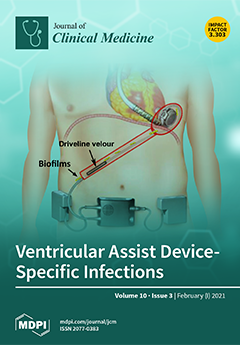Introduction: Total ankle arthroplasty (TAA) is becoming a more frequent treatment option for end-stage ankle osteoarthritis (OA) as outcomes measures are improving. However, there is concern that malalignment of TAA can result in premature failure of the implant. One of the malalignment issues is the talar sagittal malposition. However, a consensus on the significance of the sagittal translation of the talus in TAA is yet to be established. The aim of this study was, therefore, to clarify whether talus OA subluxation is normalized after the implantation of a mobile TAA. Methods: Forty-nine consecutive patients with symptomatic end-stage ankle OA underwent 50 cementless three-component mobile-bearing VANTAGE TAA with 21 right ankles (42%) and 29 left ankles (58%). Clinical and radiographic outcomes were assessed: Clinical variables: American Orthopedic Foot and Ankle Society (AOFAS) ankle-hindfoot score (0–100), visual analogue scale (VAS, 0–10), and ankle range of motion (ROM). Radiological variables: medial distal tibial articular angle (mDTAA), anterior distal tibial articular angle (aDTAA) and lateral talar station (LTS). Results: The clinical results showed the mean improvement in AOFAS hindfoot score from 42.12 ± SE 2.42 (Range: 9–72) preoperatively, to 96.02 ± SE 0.82 (Range: 78–100) at a mean follow-up of 12 months, with a highly statistically significant difference (
p < 0.00001). Pain score (VAS) was 6.70 ± SE 0.28 (Range 0–10) preoperatively, and 0.26 ± SE 0.12 (Range: 0–3) at 12-month follow-up, with a highly statistically significant difference (
p < 0.00001). ROM measurements preoperatively showed a mean of 22.55° ± SE 1.51° (Range: 0–50°), which showed a statistically significant improvement (
p < 0.0001) to 45.43° ± SE 1.56° (Range: 25–60°) 12 months postoperatively. The radiological analyses revealed the following results: On the coronal view, the mDTAA preoperatively was 88.61 ± SE 0.70 (Range: 78.15–101.10), which improved to 89.46 ± SE 0.40 (Range: 81.95–95.80) at 12 months (not statistically significant—
p = 0.94). On the sagittal view, the preoperative values of the aDTAA showed 82.66 ± SE 0.84 (Range: 70.35–107.47), which improved to 88.98 ± SE 0.47 (Range: 82.83–96.32) at 12 months postoperatively, with a highly statistically significant difference between preoperative and 12-months values (
p < 0.00001). The mean LTS values for all patients were 3.95 mm ± SE 0.78 (Range: −11.52 to 13.89) preoperatively and 1.14 mm ± SE 0.63 (Range: −10.76 to 11.75) at 12 months, with a statistically significant difference between preoperative and 12-month follow-up (
p = 0.01). The review of the radiological TAA osteointegration at 12 months showed no cases of loosening of the implanted TAAs. Two cases (4%) showed a radiolucency and one case (2%) a cyst on the tibial component; no cases had a change on the talar component. No TAA complication/revision surgeries were documented. Conclusion: In the present study, the lateral talar station of anteriorly subluxated ankles showed a significant improvement, i.e., physiological centralization of the talus, in the postoperative period when a mobile-bearing TAA was performed. The anterior/posterior congruency between the talar component and the mobile polyethylene insert of the mobile-bearing VANTAGE TAA allows the sagittal translation of the talus relative to the flat tibial component, reducing the prosthesis strain and failure.
Full article






